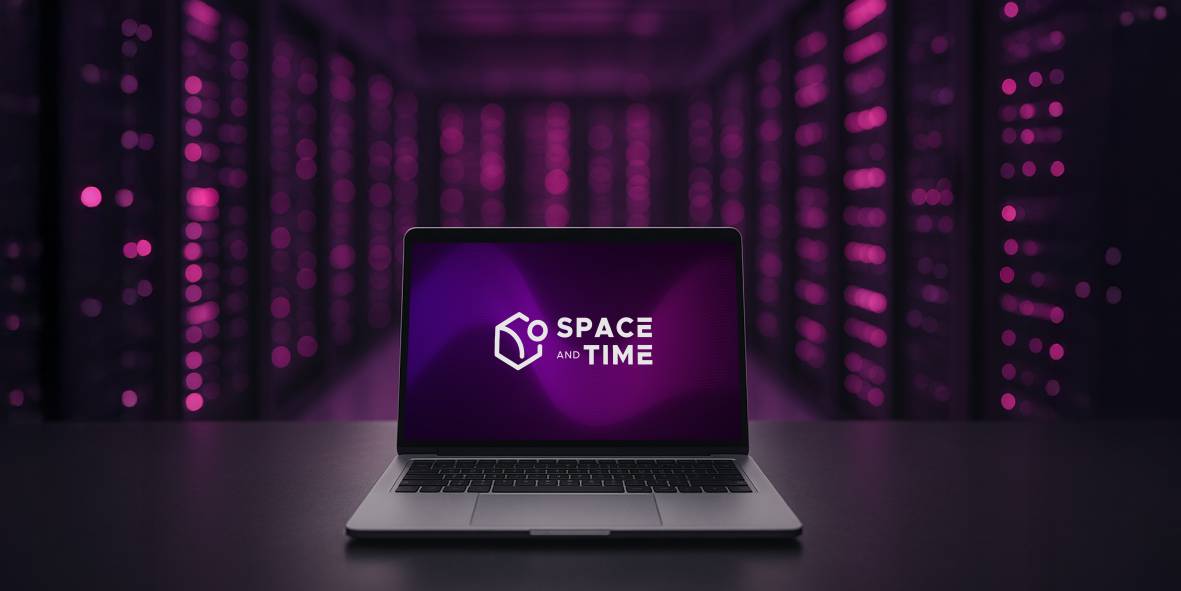Key Takeaways:
- Enterprise AI-Blockchain play: Space and Time bridges SQL databases with Ethereum/Sui through zero-knowledge proofs
- Microsoft-backed: Direct integration with Microsoft Fabric for enterprise adoption
- AI-ready infrastructure: “Proof of SQL” verifies data integrity for large language models
- Price impact: SXT token rose around 8% post-announcement to $0.078
When Wall Street Meets Web3 Data
Grayscale has just made a wager that may change how Fortune 500 companies engage with Blockchains. The company has announced a new Space and Time Trust, in exclusive partnership with accredited Investors, that provides a way to get exposed to SXT, the token for a protocol partnered with Microsoft that is addressing the dirty secret of Crypto: most smart contracts cannot query real-world data at scale.
Grayscale officially posted on X:
For you to keep in mind, Artificial Intelligence (AI) runs on databases, blockchains run on consensus, but now, the Space and Time team is building the bridge between these two technologies.
As for the STX token, it surged around 8% post-announcement, followed by a slight correction:
Why This Isn’t Just Another Altcoin Trust
Space and Time’s tech stack targets three pain points:
? Enterprise access: Microsoft Fabric integration lets firms pull Bitcoin/Sui data into Power BI
? ZK-proofed queries: “Proof of SQL” validates results without exposing raw data
? Hybrid architecture: Processes 1M+ TPS off-chain before anchoring to Ethereum
Grayscale’s Rayhaneh Sharif-Askary notes this could unlock institutional DeFi – think JPMorgan running risk models on live blockchain data.
The AI Angle: Trust But Verify
As GPT-6 raises concerns about training data provenance, Space and Time’s tamper-proof datasets become crucial. The protocol:
✅ Logs data lineage on-chain
✅ Uses zk-proofs to confirm computation integrity
✅ Already indexes 15+ chains for AI training
We all know that hallucinations plague AI because inputs aren’t auditable, and this approach seeks to fix that.
Market Reaction and Underlying Risks
Apart from the STX token’s good reaction post-Greyscale announcement, the overall investment carries notable caveats that institutional players are carefully weighing. The protocol’s mainnet only launched in May, leaving its enterprise-grade claims untested at scale. Regulatory uncertainty looms as the U.S. Securities and Exchange Commission (SEC) hasn’t yet classified SXT as a non-security, potentially complicating future Exchange Traded Fund (ETF) conversion plans, if any.
Perhaps most critically, Grayscale’s crypto trusts – such as GBTC or ETHE – have historically traded at a premium of 15% to 20% of their Net Asset Value (NAV) since they do not have a redemption mechanism. Investors, whether they are day traders or long-term investors, cannot simply sell their shares back to Grayscale for the underlying crypto. This creates arbitrage with a long time horizon for liquidity.
It is clear that the price barrier premium acts as a liquidity penalty signal. Short-term traders may hesitate to buy in, knowing they could be stuck with overpriced shares if the premium continues to fall.
This takes on a similar risk depending on demand or if Grayscale converts the trust to an ETF, decreasing or removing the premium altogether, something that would strain short-term traders’ liquidity.
The Database Wars Go Onchain
Grayscale’s move sends the signal that the next crypto battlefield, not payments or NFTs, is ownership over the data layer for AI and enterprise blockchain. Oracle and Snowflake investors are paying attention.
You may be asking: How does this compare to Chainlink? Chainlink brings external data into blockchains, while Space and Time help blockchains analyze their own data at scale.
Final Thought: Will SQL become the most valuable programming language in Web3?
For more on Blockchain development news, read: Optimum with $11M Funding Aims to Build a High-Performance Memory Layer for Blockchains: Faster Transactions, Lower Costs







